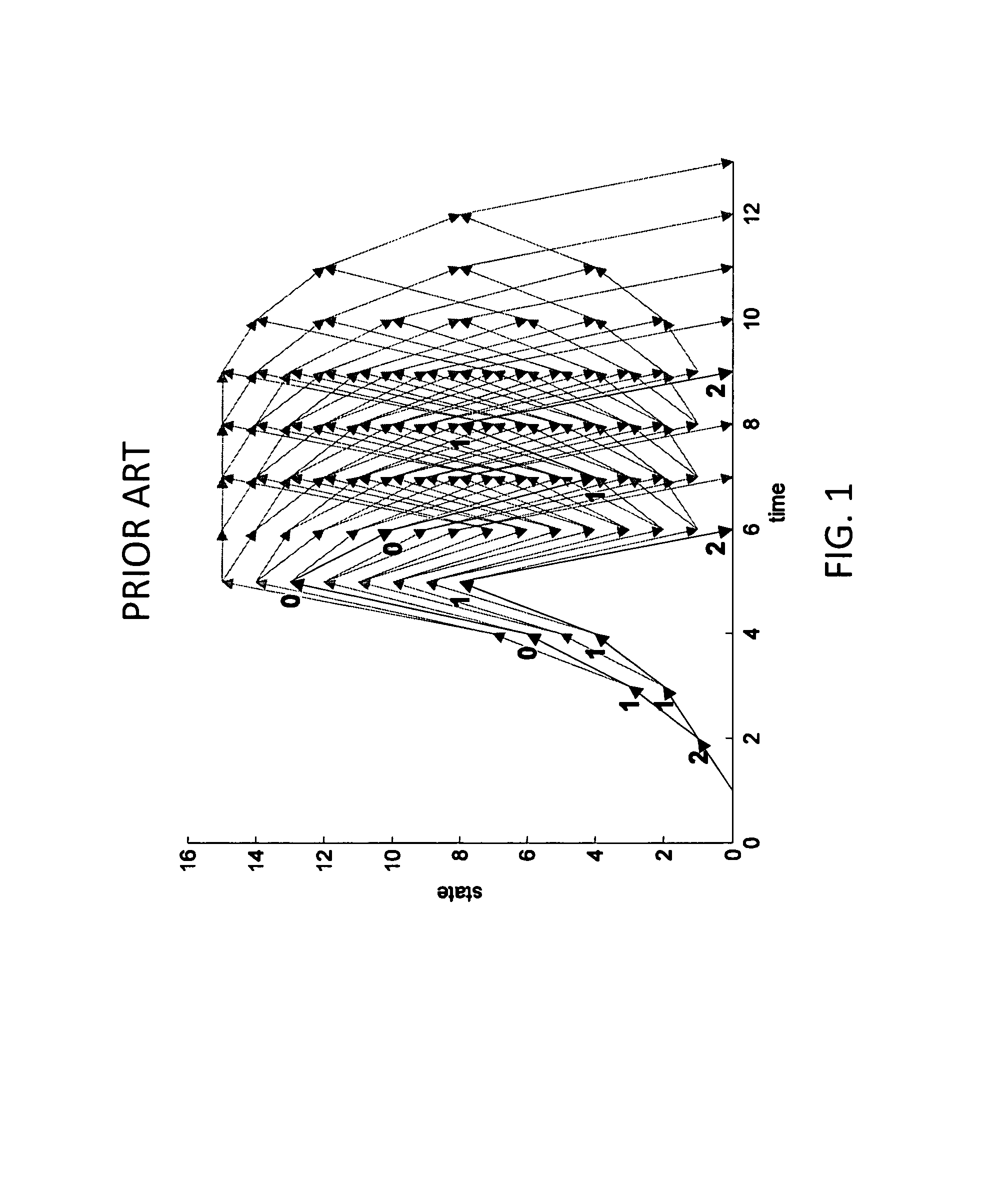Method and apparatus for transmitting and receiving convolutionally coded data for use with combined binary phase shift keying (BPSK) modulation and pulse position modulation (PPM)
a technology of convolutional coded data and pulse position modulation, which is applied in the field of communication systems, can solve the problem of lower probability of error in bpsk system for large signals, and achieve the effect of improving performance and improving performan
- Summary
- Abstract
- Description
- Claims
- Application Information
AI Technical Summary
Benefits of technology
Problems solved by technology
Method used
Image
Examples
Embodiment Construction
[0028]One disadvantage of the combined PPM and BPSK scheme outlined above is that conventional convolutional codes were designed with BPSK mapping in mind. FIG. 1 shows an example of the minimum path distance, dfree, of a convolutional code with constraint length K=5. This is a commonly used, optimal rate ½ code for K=5 with octal generators (35, 23). This is sometimes known as a trellis diagram. In FIG. 1, the minimum distance paths are highlighted by using a thicker arrow and the distance for each stage is noted near the arrow head. We can see from FIG. 1 that dfree is 7 and that there are two parallel paths, each with a distance of 7 (2+1+1+1+2; 2+1+0+0+0+1+1+2). The fewer paths there are the better is the performance of the code.
[0029]If this same code is used for the above outlined scheme with combined PPM and BPSK, the distance properties of the dibits change to that of Table 2 and FIG. 2 gives the new trellis diagram showing that this code now has a dfree of 5 with one path. ...
PUM
 Login to View More
Login to View More Abstract
Description
Claims
Application Information
 Login to View More
Login to View More - R&D
- Intellectual Property
- Life Sciences
- Materials
- Tech Scout
- Unparalleled Data Quality
- Higher Quality Content
- 60% Fewer Hallucinations
Browse by: Latest US Patents, China's latest patents, Technical Efficacy Thesaurus, Application Domain, Technology Topic, Popular Technical Reports.
© 2025 PatSnap. All rights reserved.Legal|Privacy policy|Modern Slavery Act Transparency Statement|Sitemap|About US| Contact US: help@patsnap.com



